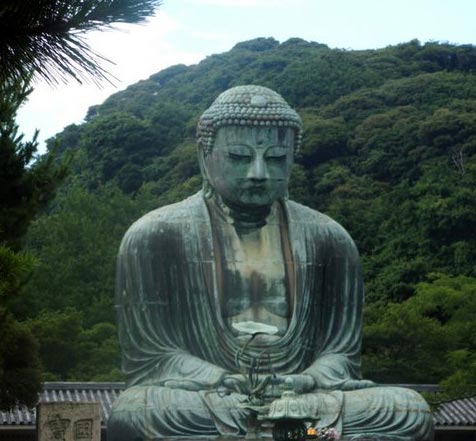
Theravada Buddhism and Mahayana Buddhism share the same core beliefs and devotion to the life and teaching of Buddha, but they do have some differences.
Theravada Buddhism is associated with South East Asia and is perhaps closer to the original Indian form of Buddhism. As Mahayana Buddhism spread north through Tibet and China, it took on more local customs.
Location of Buddhist Paths
- Theravada Buddhism – Southern (Sri Lanka, Thailand, Burma, Laos, Cambodia, parts of Southeast Asia)
- Mahayana Buddhism – Northern (Tibet, China, Taiwan, Japan, Korea, Mongolia, parts of Southeast Asia )
Scriptures
- Theravada in Pali (Pali Canon).
- Mahayana in Sanskrit (Sutras)
- Both share the common basic Buddhist teachings of Four Noble Truths, Eight-fold path.
Language Difference
Theravada Buddhism is more conservative. It places importance on the original Pali language as the birth language of the Buddha. Pali is used in worship.
Bodhisattvas
- In Theravada Buddhism the main Bodhisattvas is Maitreya.
- In Mahayana Buddhism Maitreya plus non-historical figures.
- Mahayana Buddhism suggests Boddhisatva’s delay their realisation to stay in Samsara and help other struggling humans.
- Theravada suggests Bodhisattvas seek enlightenment first before they can help others stuck in Samsara. In Mahayana Buddhism, Bodhisattvas have greater prominence.
- In Mahayana Buddhism, Bodhisattvas have greater prominence.
Goal of Buddhism
- Theravada Buddhists place greater emphasis on arhat – liberation or Nirvana.
- In Mahayana Buddhism, the role of the Bodhisattva path is given more prominence.
Teachings
Theravāda promotes the concept of vibhajjavāda “teaching of analysis”. This suggests the seeker should gain insights from his own experience, application of knowledge, and critical reasoning. Though this should be weighed against scripture and wise monks.
Mahayana promotes the idea that an aspirant should not just seek personal enlightenment but the enlightenment of all beings. It also accepts a wide range of approaches to enlightenment; it includes not just meditation and personal disciplines but selfless service and working in the world for the benefit of others.
Type of Meditation
Theravada
Mainly silent-mind, mindfulness meditation. There are two main types of Theravada meditation:
- Samatha: Calming meditation
- Vipassana: Insight meditation
Mahayana
- Mahayana Buddhism greater emphasis on mantras, chanting, especially in Tibetan Buddhism.
- Though Tibetan Buddhism is based on Mahayana, it could be seen as its own strand – Vajrayana. Tibetan Buddhism is based on Tantric disciplines.
Modern expressions
Mahayana Buddhism
- Pure Land,
- Zen,
- Vajrayana (or Tantric) Buddhism
Theravada
- Thai Forest Tradition
- Vipassana
Monastic traditions
There is a monastic tradition in both branches of Buddhism. The monastic tradition in Theravada is perhaps considered more important and there is a strong relationship between monks/nuns and lay people.
Mahayana Buddhism also has a strong monastic tradition.
Citation: Pettinger, Tejvan. “Differences between Theravada and Mahayana Buddhism”, Oxford, UK www.biographyonline.net – 12th Dec. 2016.
Related pages

